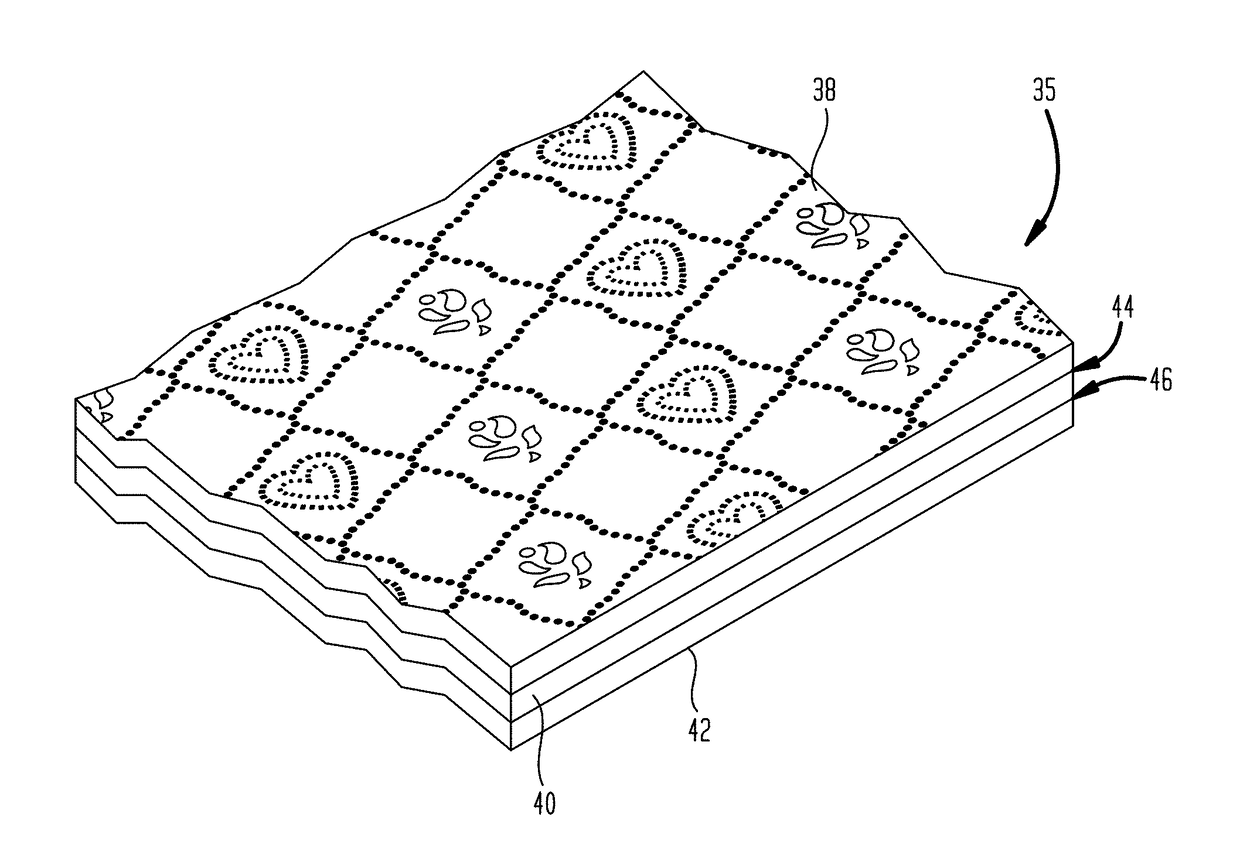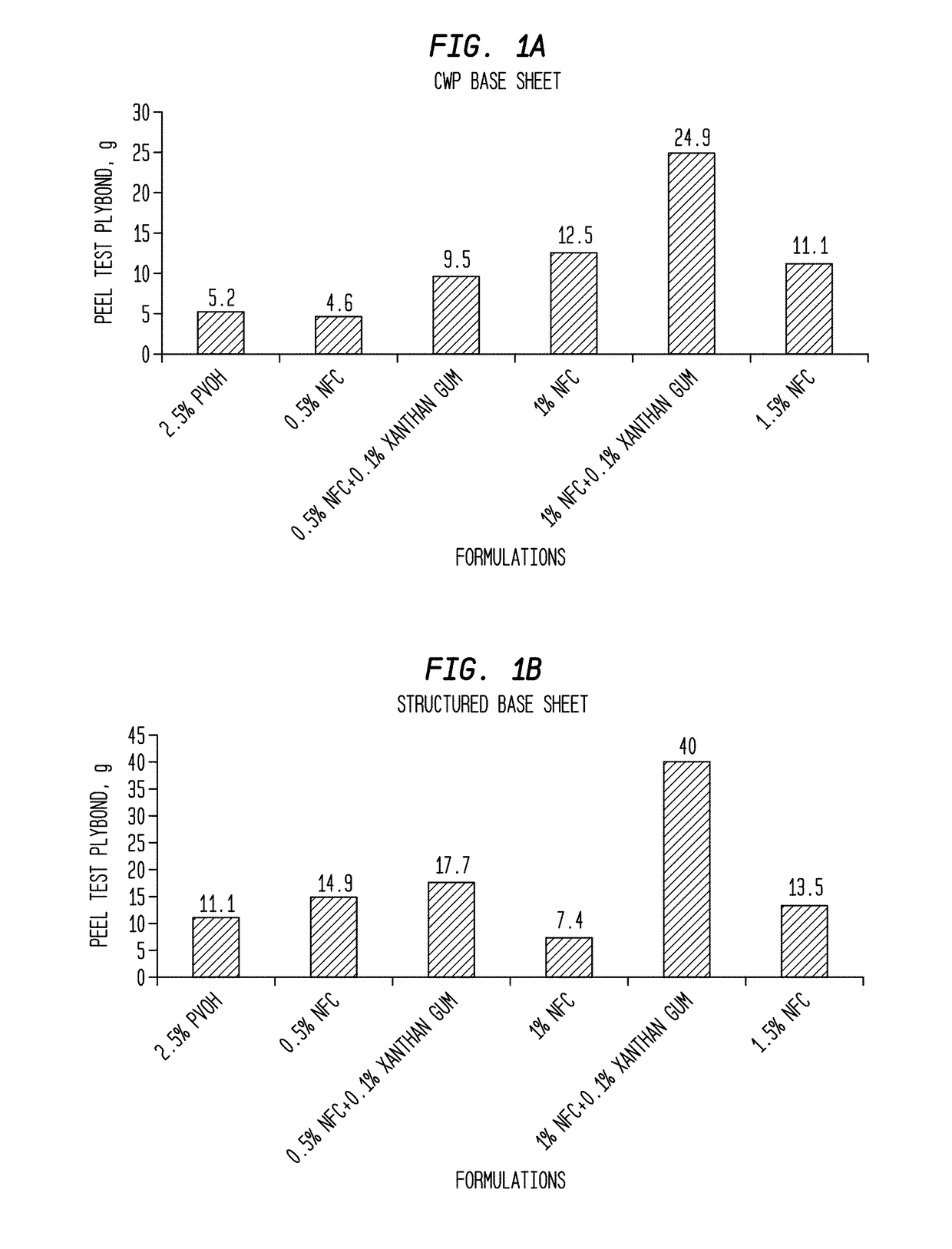Nanofibrillated Cellulose Ply Bonding Agent Or Adhesive and Multi-Ply Absorbent Sheet Made Therewith
a technology of cellulose ply bonding agent or adhesive and cellulose cellulose, which is applied in the direction of pectin adhesives, film/foil adhesives, polyether adhesives, etc., can solve the problems of affecting the processing places several demands on the adhesive, and the conventional adhesive tends to adversely affect the softness of the product, etc., to achieve the effect of high viscosity, improved surface finish and texture, and improved product soft soft textur
- Summary
- Abstract
- Description
- Claims
- Application Information
AI Technical Summary
Benefits of technology
Problems solved by technology
Method used
Image
Examples
Embodiment Construction
[0043]The invention is described in detail below in connection with the Figures for purposes of illustration, only. The invention is defined in the appended claims. Terminology used herein is given its ordinary meaning consistent with the exemplary definitions set forth immediately below; mg refers to milligrams and m2 refers to square meters, Fpm refers to feet per minute and so forth.
[0044]Adhesive Viscosity is measured at room temperature using a cone and plate geometry.
[0045]Characteristic Breaking Length of NFC material is determined by testing a handsheet of the subject NFC fiber as described herein.
[0046]Characteristic Nanofiber Viscosity is measured on a 1 wt % suspension of the NFC in water as further described herein.
[0047]“Consisting essentially of” and like terminology refers to the recited components and excludes other ingredients which would substantially change the basic and novel characteristics of the composition or article. Unless otherwise indicated or readily app...
PUM
| Property | Measurement | Unit |
|---|---|---|
| Breaking Length | aaaaa | aaaaa |
| Viscosity | aaaaa | aaaaa |
| Viscosity | aaaaa | aaaaa |
Abstract
Description
Claims
Application Information
 Login to View More
Login to View More - R&D
- Intellectual Property
- Life Sciences
- Materials
- Tech Scout
- Unparalleled Data Quality
- Higher Quality Content
- 60% Fewer Hallucinations
Browse by: Latest US Patents, China's latest patents, Technical Efficacy Thesaurus, Application Domain, Technology Topic, Popular Technical Reports.
© 2025 PatSnap. All rights reserved.Legal|Privacy policy|Modern Slavery Act Transparency Statement|Sitemap|About US| Contact US: help@patsnap.com



